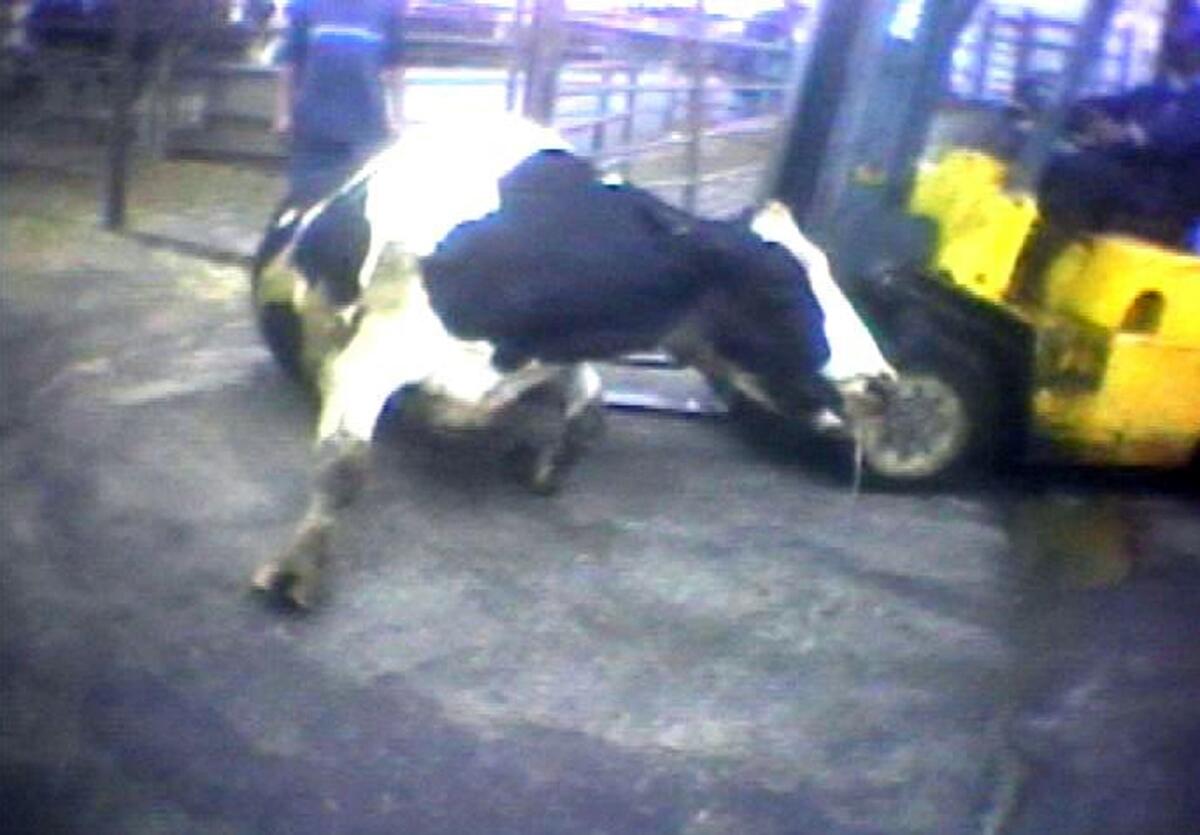Livestock abuse: The peril of ‘ag-gag’ bills

- Share via
A California Assembly bill that would require anyone who videotapes, photographs or records incidents of animal cruelty to turn over the evidence to authorities within 48 hours — or be charged with an infraction of the law — sounds like a tough new measure to crack down on abuse. It’s not.
In reality, it’s one of a crop of disturbing “ag-gag” bills being introduced across the country. Although AB 343 is not as bad as some others that ban outright recording and videotaping at animal facilities, it would effectively hamper animal welfare undercover investigators and employee whistle-blowers who are collecting information on systemic animal cruelty at meatpacking plants, slaughterhouses, livestock ranches and farms. It should be put out of its misery and killed quickly in committee.
The bill is sponsored by the California Cattlemen’s Assn., a nonprofit trade group representing ranchers and beef producers. Assemblyman Jim Patterson, the Fresno Republican who authored the measure, says it is a sincere and legitimate attempt by ranchers to deal with abuse as quickly as possible by compelling witnesses to bring their evidence to local authorities. Patterson contends that if someone stumbles across an incident of abuse, he should report it immediately and not attempt to collect more evidence. “Do you really have to have 10 animals abused? Isn’t one enough?” Patterson asks.
Unfortunately, one animal is not enough, and two days is usually not sufficient. It can take several weeks to document a pattern of abuse. A single incident, reported to a district attorney or police, is rarely enough for a strong case for prosecution and can easily be dismissed by the facility owner as a one-time occurrence, according to the director of undercover investigations for the Humane Society of the U.S. That’s why animal welfare groups don’t believe that the cattlemen’s aim is to protect animals. If that’s the intention, they say, the cattlemen should embrace thorough investigations of animal abuse, not suggest preempting them.
The investigator for the Humane Society who went undercover at the Hallmark/Westland slaughterhouse and meatpacking company in Chino in 2007 and videotaped so-called downer cows being forced to their feet with forklifts and electric prods and led into slaughter chutes — a violation of federal law prohibiting sick cows from entering the food supply — spent six weeks collecting about 20 hours of video. The organization turned over the footage to the San Bernardino County district attorney and later made some of it public. The result was the largest recall of beef in U.S. history and the eventual shuttering of the plant.
Besides, it is not a great idea to mandate reporting of criminal activity except by professionals dealing with cases of sexual or child abuse. Although people who witness criminal activity should be encouraged to report it, they should not be considered to have violated the law if they don’t.
No owner of a livestock operation wants to see undercover footage of employees hitting, kicking or mistreating animals go viral. The best way to guard against that, and also to protect animals, is for operators to monitor vigilantly the people they hire and make it clear that cruelty will not be tolerated — so that investigators won’t find anything at all to videotape.
More to Read
A cure for the common opinion
Get thought-provoking perspectives with our weekly newsletter.
You may occasionally receive promotional content from the Los Angeles Times.









